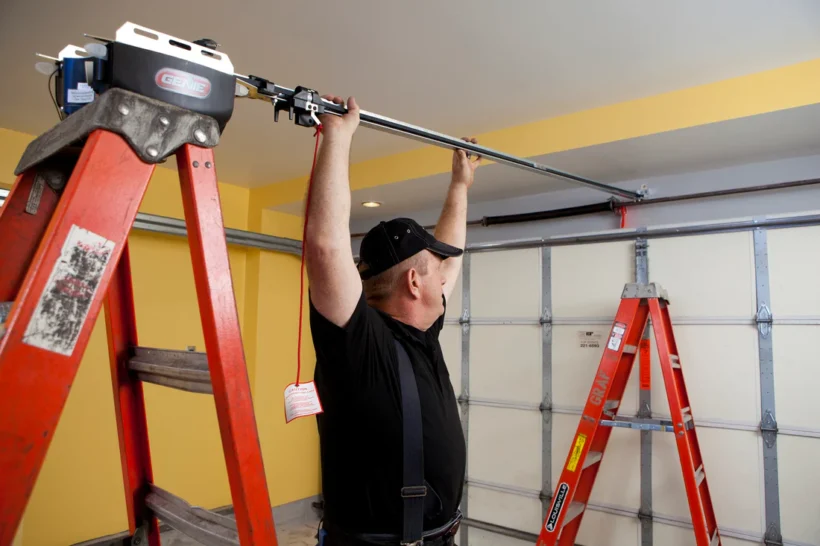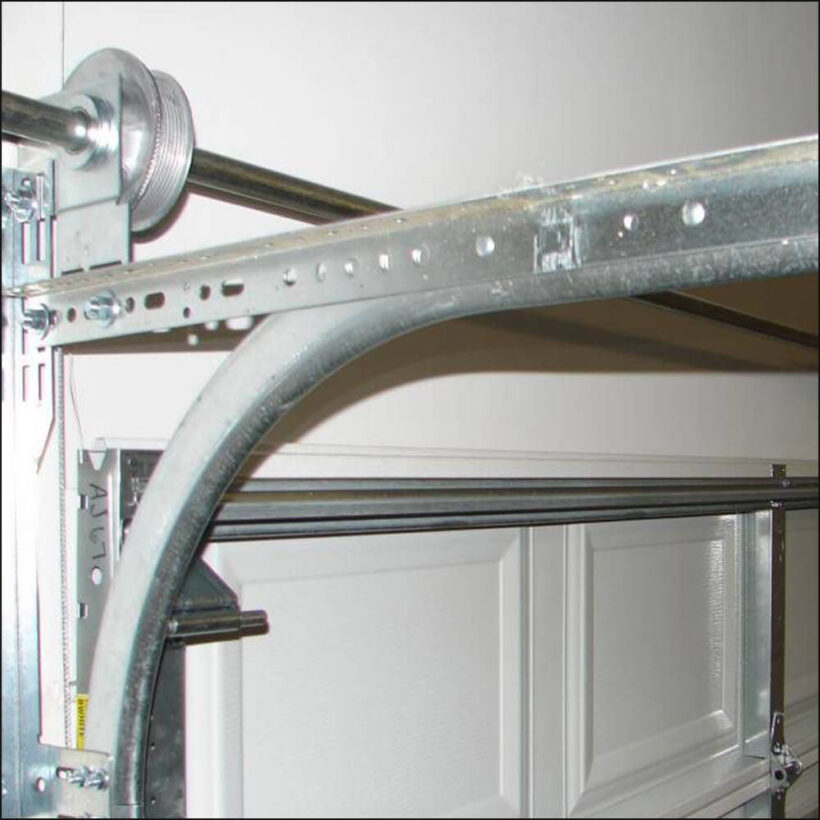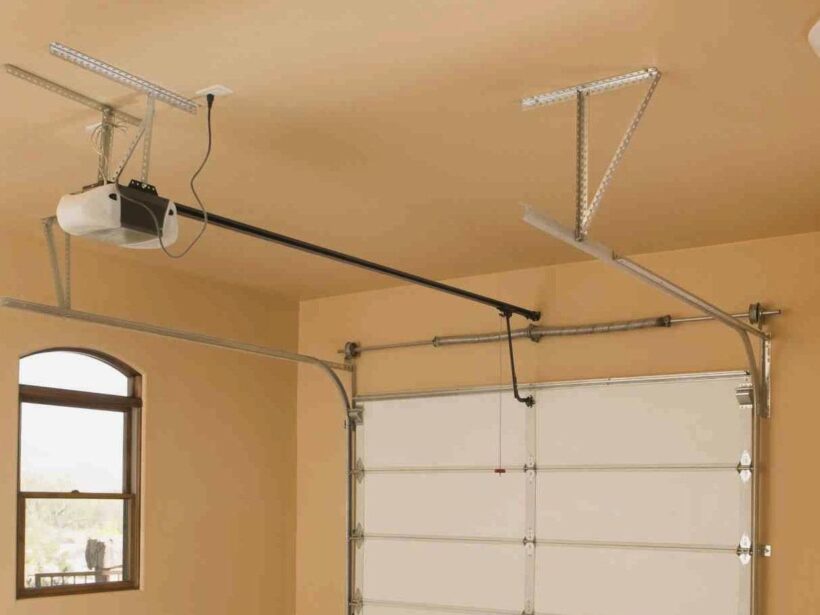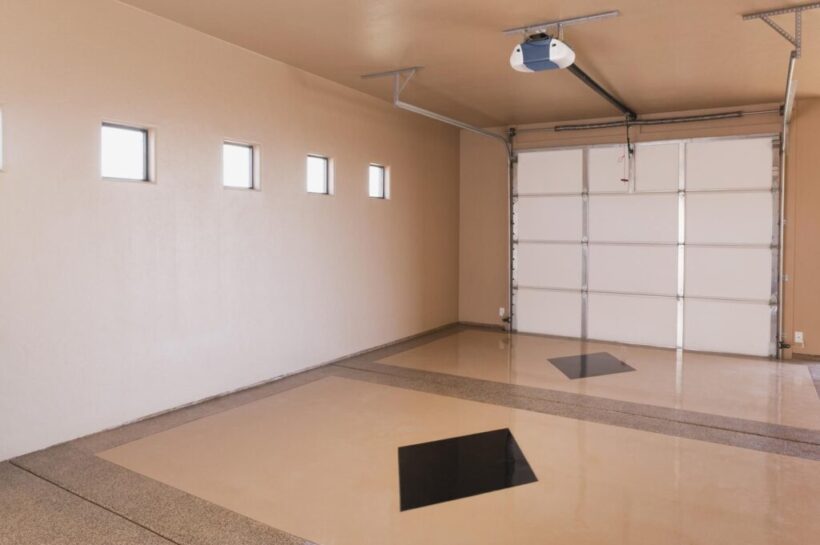Installing a garage door may appear to be a difficult task, but with the correct instruments and instructions, it can be done in only a few hours. This article will guide you through the process of installing a new garage door. Whether you’re a novitiate or an expert contractor, read on for all of the information you’ll need to put up your own garage door.
Why are garage doors installed?
Garages often serve as a storage area or workspace, and installing a garage door can make it easier to use this space. A garage door opener allows users to open the door from inside or outside their home, which makes it easy to get in and out of the car. Additionally, a garage door can help protect their vehicle from weather conditions such as rain or snow.
A well-functioning garage door also helps reduce noise and heat buildup in the house during warm weather months. It is important for them to choose an entrance that is compatible with their home’s layout so that there are no confusing doors blocking their way when exiting or entering the house.
Additionally, many homeowners prefer garages that are open outward because this provides more curb appeal for their homes. When installing a new garage door, be sure to tell users about features like remote access so they can open and close the door from anywhere in their homes!
The installation process for a garage door

Installing your garage door is a two-person job that requires at least one person to be familiar with the instructions. Having all the necessary tools and materials is essential before beginning.
First, you will need to measure the height and width of your garage door opening. It’s essential to get an accurate measurement to purchase a door that will fit properly. Next, you will need to determine the garage door you want to install. There are three main types: sectional, rolling, and tilt-up. Sectional doors are the most popular type and are made of several panels that hinge together. Rolling doors are made of one piece and roll up on a track. Tilt-up doors are made of one piece and tilt up as they open.
Once you know which type of door you want to install, you will need to gather the necessary materials. The amount and type of materials will vary depending on the type of door that you choose.
Once you’ve gathered the essential supplies, you can begin the installation process. The first step is to install the header support; the header support is a beam running across the top of the garage door. It helps to support the weight of the door as it opens and closes.
To install the header support, you will need to:
- Carefully and precisely measure the width of the garage door opening.
- Cut a piece of 2×4 lumber to that measurement.
- Attach the 2×4 to the wall above the garage door opening using lag screws or 16d nails.
- Repeat this process for the other side of the garage door opening.
Once the header support is in place, you can install the tracks. The tracks are what the door rolls up on when it opens.
To install the tracks, you will need to:

- Measure the height of the garage door opening and cut the tracks to that measurement.
- Attach the tracks to the header support using lag screws or 16d nails.
- Repeat this process for the other side of the garage door opening.
Once the tracks are in place, you can install the rollers. The rollers are what help the door to roll up and down smoothly.
To install the rollers, you will need to:
- Lift the door into place and attach the roller brackets to the top of each panel using lag screws or 16d nails.
- Thread a roller through each bracket and secure it in place with a nut and washer.
- Repeat for the other panels on the door.
Once the rollers are in place, you can attach the hinges. The hinges connect the panels and allow them to move.
To install the hinges, you will need to:
- Position the hinge at the top corner of the first panel and use lag screws or 16d nails to secure it.
- Position the second panel so it is flush with the first panel, and attach the hinge using lag screws or 16d nails.
- Repeat for the other panels on the door.
Once all of the hinges are in place, you can move on to installing the locks. The locks help to keep the door closed and prevent it from being forced open.
To install the locks, you will need to:

- Position the lock at the top corner of the door and use lag screws or 16d nails to secure it in place.
- Repeat for the other panels on the door.
Once all of the locks are in place, you can move on to installing the weatherstripping. The weatherstripping helps to keep out drafts and pests.
To install the weatherstripping, you will need to:
- Position the weatherstripping at the top of the door and use a screwdriver or hammer to nail it.
- Repeat for the other panels on the door
Once all the weatherstrippings are in place, you can close the door and test it to ensure it opens and closes smoothly. You may need to adjust the tracks or rollers if it does not.
Conclusion
A garage door comprises many different parts, each with a specific function. The header support helps to hold the door’s weight, the tracks allow it to roll up and down smoothly, the rollers help it to move quickly, the hinges connect the panels, and the locks keep it closed. The weatherstripping helps to keep out pests and drafts. To learn about the different parts of a garage door, Visit GarageDoorNation.com for more info about DIY parts; you can easily install it yourself and be sure that your door is in good working order.

